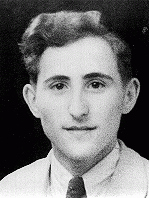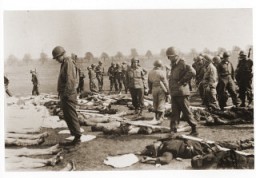You searched for: %E4%BD%93%E8%82%B2%E6%8A%95%E6%B3%A8%E5%B9%B3%E5%8F%B0,%E4%BD%93%E8%82%B2%E6%8A%95%E6%B3%A8%E7%BD%91%E7%AB%99,%E3%80%90%E4%BD%93%E8%82%B2%E6%8A%95%E6%B3%A8%E7%BD%91%E5%9D%80%E2%88%B63399yule.com%E3%80%91%E7%9A%87%E5%86%A0%E4%BD%93%E8%82%B2%E6%8A%95%E6%B3%A8%E5%B9%B3%E5%8F%B0,%E6%B2%99%E5%B7%B4%E4%BD%93%E8%82%B2%E5%8D%9A%E5%BD%A9%E5%B9%B3%E5%8F%B0,%E4%BD%93%E8%82%B2%E5%8D%9A%E5%BD%A9app,%E8%B6%B3%E7%90%83%E5%8D%9A%E5%BD%A9app%E3%80%90%E8%B5%8C%E7%90%83%E5%9C%B0%E5%9D%80%E2%88%B63399yule.com%E3%80%91
<< Previous | Displaying results 141-150 of 162 for "%E4%BD%93%E8%82%B2%E6%8A%95%E6%B3%A8%E5%B9%B3%E5%8F%B0,%E4%BD%93%E8%82%B2%E6%8A%95%E6%B3%A8%E7%BD%91%E7%AB%99,%E3%80%90%E4%BD%93%E8%82%B2%E6%8A%95%E6%B3%A8%E7%BD%91%E5%9D%80%E2%88%B63399yule.com%E3%80%91%E7%9A%87%E5%86%A0%E4%BD%93%E8%82%B2%E6%8A%95%E6%B3%A8%E5%B9%B3%E5%8F%B0,%E6%B2%99%E5%B7%B4%E4%BD%93%E8%82%B2%E5%8D%9A%E5%BD%A9%E5%B9%B3%E5%8F%B0,%E4%BD%93%E8%82%B2%E5%8D%9A%E5%BD%A9app,%E8%B6%B3%E7%90%83%E5%8D%9A%E5%BD%A9app%E3%80%90%E8%B5%8C%E7%90%83%E5%9C%B0%E5%9D%80%E2%88%B63399yule.com%E3%80%91" | Next >>
-
Chaia Gurvitz
ID CardFrom a Jewish family, Chaia lived outside Kovno, a city with a large Jewish population that was renowned for its Hebrew school system. Chaia ran a grocery store with her husband, a retired shoemaker, and their daughter Yenta. 1933-39: Chaia is expecting her daughter Feiga, Feiga's husband, Josef, and her grandson, Abraham, for dinner. Feiga works so hard all week in her beauty shop, Chaia is glad she can help out by preparing the big Sunday meal. She has baked a special cake for Abe. Chaia hopes the…

-
Feiga Malnik
ID CardRaised in a Jewish family, Feiga lived with her husband, Josef, in Kovno, a city with a large Jewish community of 38,000. Kovno was situated at the confluence of two rivers, and with its opera company, chic stores and lively nightclubs, it was often called "Little Paris." Feiga was a beautician and Josef was a barber, and together they ran a shop in downtown Kovno. 1933-39: Every day Josef and Feiga walk to their shop, which is near their house. It's hard work, being a beautician--Feiga is on her feet…

-
Josef Malnik
ID CardRaised in a Jewish family, Josef lived with his wife, Feiga, in Kovno, a cosmopolitan city that was picturesquely situated at the juncture of two rivers and was known as the "Little Paris." Josef was a barber, his wife was a beautician, and together they ran a shop in downtown Kovno. 1933-39: Every day Josef and Feiga walk to their shop which is not far from their house. It's hard work being a barber--Josef is on his feet most of the day, seven days a week including a couple of hours on Sunday. He has…

-
Personal Stories: Jewish Partisans
ArticleBrowse a series of short biographies from the Jewish Partisan Educational Foundation.

-

-
Concentration Camp System: In Depth
ArticleThe Nazi regime's extensive camp system included concentration camps, forced-labor camps, prisoner-of-war camps, transit camps, and killing centers.

-
Hermann Ludwig Maas
ArticleHermann Ludwig Maas, a Protestant pastor in Heidelberg, Germany, was a rescuer and clergyman who stood in solidarity with the Jewish community.
-
Dr. Robert Ritter visits a "Gypsy camp"
PhotoDr. Robert Ritter talks to several residents in a Zigeunerlager ("Gypsy camp"). Hamburg, Germany, 1940. During the Nazi era, Dr. Robert Ritter was a leading authority on the racial classification of people pejoratively labeled “Zigeuner” (“Gypsies”). Ritter’s research was in a field called eugenics, or what the Nazis called “racial hygiene.” Ritter worked with a small team of racial hygienists. Among them were Eva Justin and Sophie Ehrhardt. Most of the people whom Ritter studied and…

-
Eva Justin interviews a Romani woman interned in a "Gypsy camp"
PhotoA color photograph of Eva Justin interviewing a Romani woman interned in a "Gypsy camp." Vienna, Austria, 1940. During the Nazi era, Dr. Robert Ritter was a leading authority on the racial classification of people pejoratively labeled “Zigeuner” (“Gypsies”). Ritter’s research was in a field called eugenics, or what the Nazis called “racial hygiene.” Ritter worked with a small team of racial hygienists. Among them were Eva Justin and Sophie Ehrhardt. Most of the people whom Ritter studied and…

-
A family interned in a "Gypsy camp"
PhotoA family stands outside of their wagon while interned in a Zigeunerlager ("Gypsy camp"). In the background, children are crowded around Eva Justin. Justin worked for the Center for Research on Racial Hygiene and Demographic Biology. Schleswig-Holstein, Germany, 1938. During the Nazi era, Dr. Robert Ritter was a leading authority on the racial classification of people pejoratively labeled “Zigeuner” (“Gypsies”). Ritter’s research was in a field called eugenics, or what the Nazis called…

